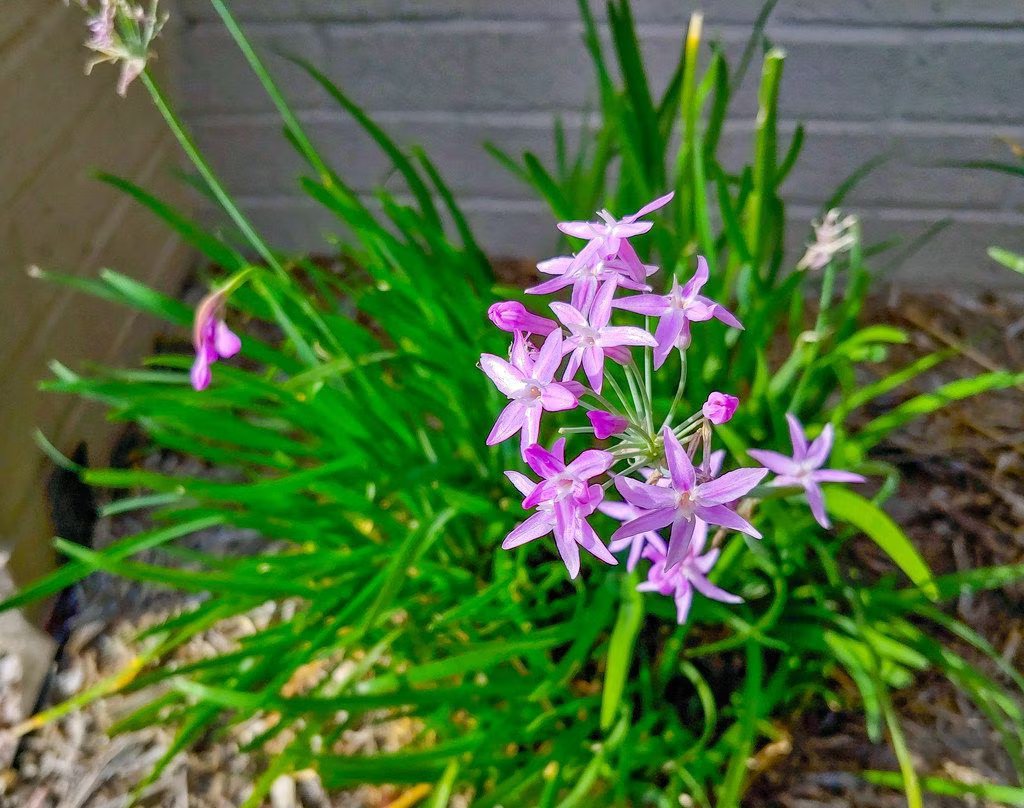Home>Gardening Techniques>Seasonal Gardening>What Perennials Should Be Cut Back In The Fall


Seasonal Gardening
What Perennials Should Be Cut Back In The Fall
Modified: January 22, 2024
Discover which perennials should be cut back in the fall for optimal seasonal gardening results.
(Many of the links in this article redirect to a specific reviewed product. Your purchase of these products through affiliate links helps to generate commission for Chicagolandgardening.com, at no extra cost. Learn more)
Table of Contents
Introduction
Welcome to the world of seasonal gardening! As the seasons change, it’s time to delve into the art of caring for your garden throughout the year. One important aspect of maintaining a healthy and vibrant garden is knowing when and how to cut back your perennials.
Perennials are a wonderful addition to any garden. These long-lived plants come back year after year, bringing beauty and color to your outdoor space. But as the growing season comes to an end, it becomes necessary to give your perennials some attention. Cutting back your perennials in the fall is an essential task that not only helps to keep your garden looking tidy but also promotes better growth and health in the following season.
In this article, we will explore the reasons behind cutting back perennials in the fall, the factors to consider before embarking on this task, and the specific perennials that should be cut back during this time. We will also delve into proper techniques to ensure you are caring for your perennials in the best possible way.
So, if you’re ready to learn the secrets of seasonal gardening and the art of cutting back perennials, let’s dive in!
Understanding Perennials
Before we delve into the world of cutting back perennials, it is important to have a basic understanding of what perennials are. Perennials are plants that have a life cycle that extends beyond two years. Unlike annuals, which die off at the end of the growing season, perennials have the ability to regrow from their root systems year after year.
Perennials come in a wide variety of shapes, sizes, and colors, making them versatile and attractive additions to any garden. From vibrant flowers to lush foliage, perennials offer endless options for creating visually stunning landscapes.
It is important to note that not all perennials have the same growth patterns. Some perennials are evergreen, meaning they retain their leaves year-round, while others are deciduous and shed their leaves during the winter months. This distinction will play a role in determining when and how to cut back different types of perennials.
Understanding the growth habits and characteristics of your specific perennials will help you make informed decisions when it comes to caring for them, including when to cut them back.
Now that we have a general understanding of what perennials are, let’s explore the reasons behind cutting back these plants in the fall.
Why Cut Back Perennials in the Fall?
As the gardening season winds down and temperatures begin to drop, you may wonder why cutting back perennials in the fall is necessary. There are several reasons why this practice is highly beneficial for the health and longevity of your plants.
Firstly, cutting back perennials in the fall helps to tidy up your garden beds and maintain a neat appearance. By removing the spent foliage and flowers, you create a clean canvas for the winter months. This not only enhances the aesthetic appeal of your garden but also makes springtime gardening much easier.
Secondly, cutting back perennials in the fall is essential for disease and pest prevention. Many common garden diseases and pests overwinter in plant debris. By removing the dead foliage and flowers, you eliminate potential hiding places and reduce the risk of disease and pest infestations in the upcoming season. This proactive approach can save you time and effort in dealing with these issues later on.
Another important reason to cut back perennials in the fall is to promote better health and growth in the following season. By removing the old growth, you stimulate new growth from the base of the plant. This rejuvenation process allows for better air circulation, reduces the risk of fungal diseases, and encourages stronger stems and healthier overall plants.
Additionally, cutting back perennials in the fall helps to manage the size and shape of your plants. Some perennials have a tendency to become overgrown or spread aggressively. By pruning them back, you can control their size and prevent them from overcrowding other plants in your garden.
Overall, cutting back perennials in the fall is a proactive gardening practice that promotes tidiness, disease prevention, and healthy growth. Now that we understand the importance of this task, let’s explore the factors to consider before grabbing your pruners.
Factors to Consider Before Cutting Back Perennials
Before you start pruning your perennials, there are several factors that you should consider. By taking these factors into account, you can ensure that you are making the right decisions for the health and wellbeing of your plants.
The first factor to consider is the specific type of perennial you have. Different perennials have different growth habits and pruning requirements. Some perennials, such as ornamental grasses, have beautiful seed heads that provide winter interest and should be left uncut until early spring. On the other hand, perennials with soft stems, like salvias, may benefit from a light pruning in the fall to prevent them from flopping over during winter storms. Researching the specific needs of your perennials will help you determine the appropriate time and method for pruning.
The second factor to consider is the climate in your area. In colder regions, it is generally recommended to wait until late fall or even early winter to cut back perennials. Leaving the foliage intact can provide some insulation and protection against harsh winter conditions. However, in milder climates, where freezing temperatures are rare, you can opt to cut back perennials earlier in the fall.
Timing is crucial when cutting back perennials. It is important to give your plants enough time to store energy in their roots before the onset of winter. Cutting back too early can disrupt this process and weaken the plants. On the other hand, waiting too long can make the pruning process more challenging if the plants have become too woody or brittle.
Consider the overall health of your perennials before cutting them back. If a plant is diseased or infested with pests, it may be best to remove all affected foliage and dispose of it properly to prevent the spread of diseases or pests. Similarly, if a perennial is struggling or has not performed well during the growing season, pruning it back can help rejuvenate the plant for the next year.
Lastly, consider the specific goals you have for your garden. If you value the winter interest provided by seed heads or the structure of perennial foliage, you may choose to leave some perennials uncut or only lightly prune them. On the other hand, if you prefer a clean and tidy garden bed, you may opt for a more thorough pruning.
By considering these factors, you can make informed decisions about when, how, and to what extent you should cut back your perennials. Now, let’s move on to discussing the specific perennials that should be cut back in the fall and the proper techniques to do so.
Perennials that Should Be Cut Back in the Fall
While the pruning needs of perennials can vary, there are several common perennial plants that benefit from being cut back in the fall. Let’s explore some of these perennials and why they should be pruned during this time.
1. Hostas: These shade-loving perennials have large, lush foliage that can become tired-looking by the end of the growing season. Trimming back the foliage in the fall not only tidies up the plants but also helps prevent slugs and other pests from taking refuge in the decaying leaves.
2. Peonies: Peonies are beloved for their stunning blooms in the spring, but their foliage can start to turn brown and look unsightly as summer ends. Cutting back the foliage in the fall helps to prevent the spread of diseases such as botrytis and promotes better growth the following year.
3. Daylilies: These hardy perennials produce beautiful flowers throughout the summer. However, their thick foliage can become untidy and prone to disease if not cut back. Trimming the foliage to a few inches above the ground in the fall helps keep daylilies healthy and ready for next year’s blooms.
4. Salvias: Salvias are known for their tall, colorful flower spikes. After the blooms have faded, cutting back salvias in the fall helps prevent them from flopping over during winter storms. Pruning salvias also encourages better branching and more robust growth for the next growing season.
5. Black-Eyed Susans: These cheerful, daisy-like perennials can become quite leggy and unkempt if not pruned back. Trimming them to a few inches above the ground in the fall helps maintain their compact shape and promotes healthier growth in the following year.
These are just a few examples of perennials that benefit from being cut back in the fall. It is important to research and understand the specific needs of each perennial in your garden to determine the best time and method for pruning.
Now that we know which perennials should be cut back in the fall, let’s explore the proper techniques for pruning to ensure the health and vigor of your plants.
Proper Techniques for Cutting Back Perennials
When it comes to cutting back perennials in the fall, employing proper techniques is crucial to ensure the health and future growth of your plants. Here are some essential tips to consider:
1. Clean and sharpen your tools: Before you start pruning, make sure your tools are clean and sharp. Dirty blades can spread diseases, while dull blades can damage the plants. Clean your tools with soapy water and sanitize them with rubbing alcohol. Sharpen blades so they make clean cuts.
2. Assess the plant: Look carefully at the perennial you plan to prune. Identify any dead or diseased foliage and remove it entirely. Consider the overall shape and size of the plant, as well as its growth habits and flowering pattern, before determining how much to prune.
3. Trim back to the right height: Depending on the type of perennial, you’ll want to trim back the foliage to an appropriate height. As a general rule of thumb, aim to leave around 2-3 inches of foliage above ground level. This will provide some protection to the crown and encourage new growth in the spring.
4. Dispose of pruned material properly: It is important to properly dispose of pruned material from diseased or infested plants to prevent the spread of diseases and pests. Burn or bag and discard the material in the trash, instead of composting it.
5. Consider leaving seed heads for wildlife: Some perennials, like coneflowers and ornamental grasses, have seed heads that are important food sources for birds and other wildlife during the winter months. If wildlife conservation is a priority in your garden, you may choose to leave these seed heads uncut until early spring.
6. Mulch around the plants: After cutting back your perennials, consider applying a layer of mulch around the base of the plants. This helps to insulate the roots, suppress weeds, and provide a finished look to your garden beds.
By following these proper techniques, you can ensure that your perennials are pruned correctly and set up for healthy and vigorous growth in the following season.
Now that we have covered the proper techniques for cutting back perennials, let’s discuss the perennials that should not be cut back in the fall.
Plants that Should Not Be Cut Back in the Fall
While the general recommendation is to cut back many perennials in the fall, there are some plants that should not be pruned during this time. Let’s take a look at a few examples:
1. Evergreen perennials: Plants that retain their foliage throughout the year, such as evergreen perennials, should not be cut back in the fall. Their green foliage provides winter interest and protection against harsh weather conditions. Instead, wait until early spring to trim any dead or damaged growth.
2. Plants with late-season interest: Certain perennials, like sedums and asters, have late-season flowers or seed heads that provide visual interest and food sources for birds during the winter months. It is best to leave these plants intact until early spring to maximize their ornamental value.
3. Tender perennials: Tender perennials, such as geraniums and begonias, are sensitive to cold temperatures. Cutting them back in the fall can expose them to potential frost damage. Instead, consider overwintering these plants indoors or providing protective coverings.
4. Spring-blooming perennials: Perennials that bloom in the spring, like tulips and daffodils, should not be cut back in the fall. These plants rely on their foliage to gather energy for the next year’s blooms. Allow the foliage to naturally wither and die back before removing it.
5. Plants with woody stems: Perennials with woody stems, such as lavender and rosemary, should be pruned lightly in the fall, if at all. These plants benefit from minimal pruning to maintain their overall shape but should not be heavily pruned during this time.
Remember, not all perennials have the same pruning needs. It is important to research and understand the specific requirements of each plant in your garden before deciding whether or not to cut it back in the fall.
Now that we have covered the perennials that should not be cut back in the fall, let’s summarize the key points we have discussed in this article.
Conclusion
Understanding when and how to cut back your perennials in the fall is a valuable skill for any gardener. By safely and effectively trimming back spent foliage and flowers, you not only maintain the appearance of your garden but also promote better health and growth in the following season.
Throughout this article, we have explored the importance of cutting back perennials in the fall. We discussed how this practice tidies up the garden, prevents diseases and pests, and stimulates new growth. We also highlighted the factors to consider before pruning, such as plant type, climate, timing, and overall plant health.
We explored the perennials that generally benefit from being cut back in the fall, including hostas, peonies, daylilies, salvias, and black-eyed Susans. We also emphasized the proper techniques for pruning, such as using clean and sharp tools, trimming to the right height, and disposing of pruned material appropriately.
Furthermore, we mentioned that some plants should not be cut back in the fall. Evergreen perennials, plants with late-season interest, tender perennials, spring-blooming perennials, and plants with woody stems are best left untouched until the appropriate time.
By following these guidelines and specific considerations for your perennials, you can ensure a healthy and vibrant garden throughout the seasons.
Remember, each garden is unique, and it’s important to research and understand the specific needs of your perennials to make informed decisions about when and how to cut them back. By balancing good gardening practices with the natural beauty of your plants, you can create an aesthetically pleasing and thriving garden year after year.
So go ahead and grab your pruners with confidence, and embark on the journey of cutting back your perennials in the fall. Your garden will thank you for it!










